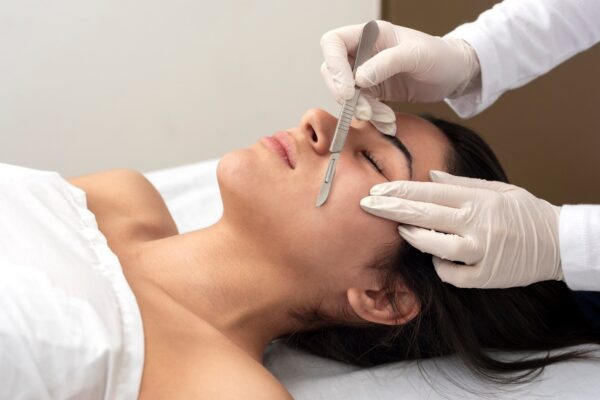Botox, a popular cosmetic treatment, has gained widespread recognition for its ability to reduce the appearance of fine lines and wrinkles. While it has become a common procedure for those looking to maintain a youthful appearance, there is still confusion surrounding what Botox is, how it works, and what to expect from the treatment. Dr. Jason Emer, MD, reviews a comprehensive overview of Botox, its benefits, potential risks, and what you should consider before undergoing the procedure.
What is Botox?
Botox is a brand name for botulinum toxin, a neurotoxic protein produced by the bacterium Clostridium botulinum. While it might sound alarming that Botox is derived from a toxin, the doses used for cosmetic and medical purposes are incredibly small and have been extensively tested for safety and efficacy. When administered correctly by a qualified professional, Botox serves as a safe and effective treatment for reducing the appearance of dynamic wrinkles—those caused by muscle movements, such as frown lines, crow’s feet, and forehead lines.
How Does Botox Work?
Botox works by temporarily paralyzing or relaxing specific muscles in the face. It does this by blocking the nerve signals that cause muscles to contract. When the muscles are relaxed, the overlying skin becomes smoother, reducing the appearance of wrinkles and fine lines. The effects of Botox are not permanent; typically, the results last between three to six months, after which the muscles gradually regain their ability to contract, and wrinkles may reappear.
The Botox Procedure: What to Expect
The Botox procedure is relatively quick and minimally invasive. Here’s what you can expect when considering Botox:
- Consultation: Before undergoing Botox treatment, it is essential to have a consultation with a qualified medical professional, such as a dermatologist or a plastic surgeon. During this consultation, you will discuss your goals, medical history, and any potential risks associated with the procedure.
- Preparation: The actual Botox procedure usually takes about 10-15 minutes, depending on the number of areas being treated. The skin will be cleansed, and in some cases, a topical anesthetic or ice may be applied to minimize discomfort.
- Injection: Using a fine needle, the practitioner will inject small amounts of Botox into specific muscles. The number of injections will depend on the area being treated and the extent of the wrinkles.
- Post-Treatment Care: After the injections, there is typically little to no downtime. Patients are usually advised to avoid rubbing the treated area, strenuous exercise, and certain medications, such as blood thinners, for a short period to prevent bruising and spreading the toxin to unintended areas.
Benefits of Botox
Botox offers several benefits beyond its cosmetic applications:
- Cosmetic Enhancement: The primary benefit of Botox is its ability to reduce the appearance of fine lines and wrinkles, providing a more youthful and refreshed appearance.
- Preventative Treatment: Many younger patients opt for Botox as a preventative measure, believing that starting treatments early can prevent wrinkles from forming or deepening over time.
- Medical Uses: Botox has been approved by the FDA for several medical conditions, including chronic migraines, excessive sweating (hyperhidrosis), muscle spasms, overactive bladder, and certain types of eye disorders. The muscle-relaxing properties of Botox can provide relief in these cases.
Potential Risks and Side Effects
While Botox is generally considered safe, it is not without potential risks and side effects. Some of the common side effects include:
- Bruising and Swelling: Minor bruising and swelling at the injection site are common and typically subside within a few days.
- Headache: Some patients may experience a mild headache following treatment, which usually resolves quickly.
- Drooping Eyelid or Brow: If Botox spreads beyond the intended area, it can cause temporary drooping of the eyelid or brow. This side effect is rare and generally resolves on its own within a few weeks.
- Allergic Reactions: Although rare, some individuals may have an allergic reaction to Botox, resulting in symptoms such as itching, rash, or difficulty breathing. It is crucial to inform your practitioner of any known allergies before treatment.
Who Should Avoid Botox?
Botox is not suitable for everyone. Individuals who should avoid Botox include:
- Pregnant or Breastfeeding Women: The effects of Botox on unborn or nursing babies are not well-studied, so it is generally recommended that pregnant or breastfeeding women avoid Botox treatments.
- People with Certain Neurological Conditions: Individuals with neurological disorders, such as ALS (Lou Gehrig’s disease) or myasthenia gravis, may be at increased risk of complications from Botox.
- Individuals Allergic to Botulinum Toxin: Anyone with a known allergy to Botox or any of its ingredients should avoid treatment.
Key Considerations Before Getting Botox
If you are considering Botox, there are several important factors to consider:
- Choose a Qualified Professional: Ensure that the person administering Botox is a licensed and experienced medical professional. This reduces the risk of complications and ensures that the procedure is performed correctly.
- Understand the Costs: Botox treatments can be costly, especially since the effects are temporary and require maintenance treatments every few months. Ensure that you fully understand the financial commitment involved.
- Manage Expectations: While Botox is effective in reducing the appearance of wrinkles, it is not a miracle cure. It is essential to have realistic expectations about what Botox can achieve.
Botox is a widely used and effective treatment for reducing the appearance of fine lines and wrinkles, offering both cosmetic and medical benefits. However, it is essential to approach Botox with a clear understanding of how it works, its potential risks, and the factors to consider before undergoing treatment. By choosing a qualified practitioner and setting realistic expectations, you can achieve a smoother, more youthful appearance while minimizing potential risks.
